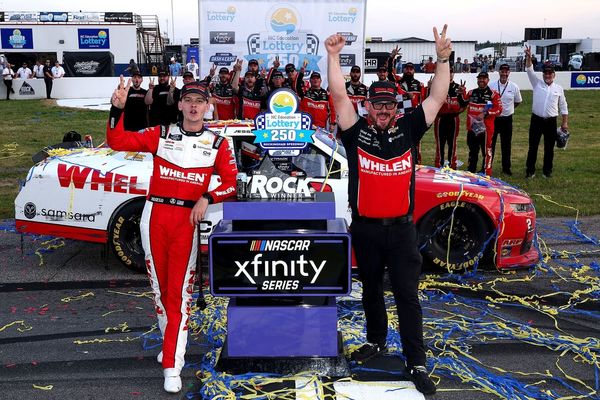
With macroeconomic uncertainty swirling, Bank of America analyst Anthony Cassamassino warns that a worst-case scenario could slash S&P 500 Index ($SPX) earnings by 10%. Amid this backdrop, BofA spotlighted nine top stock ideas for Q2. These are all high-conviction, “Buy”-rated names that span diverse industries.
Among the “Buy”-rated standouts, let’s look closely at Bath & Body Works (BBWI) and Eli Lilly (LLY). Bath & Body Works is refreshing its brand with bold product innovation and smart marketing. Eli Lilly, backed by strong momentum in obesity and diabetes treatments, is poised to benefit from aging demographics and rising drug demand. Both stocks offer compelling growth stories and BofA projects double-digit upsides.
Stock #1: Bath & Body Works
Bath & Body Works (BBWI) is a specialty retailer with a market cap of $6.14 billion, best known for its signature fragrances. The company offers a wide range of body care and home fragrance products, like 3-wick candles, mists, lotions, and soaps, under the Bath & Body Works and White Barn brands. It operates across North America and internationally through retail, e-commerce, and partner-led franchise and wholesale channels.
Bath & Body Works stock has tumbled nearly 50% from its 52-week peak and is now down 29% YTD. Supply-demand imbalances and fierce competition have dimmed its luster.
Plus, the company’s cautious 2025 sales forecasts reflect concerns over U.S. tariffs on Chinese imports and consumers tightening budgets amid economic uncertainty. Shoppers are increasingly opting for more affordable, private-label alternatives, further challenging the retailer’s market position.

Bath & Body Works dropped its Q4 earnings report on Feb. 27, beating expectations with $2.8 billion in revenue. Earnings per share landed at $2.09, down 18% but edging past Wall Street's estimates by 2.5%.
Management projects a steady path for 2025, with net sales expected to rise 1% to 3% annually and EPS ranging between $3.25 and $3.60. Free cash flow is set to clock in between $750 million and $850 million.
However, first-quarter guidance came in soft. The company is guiding for revenue growth in the 1% to 3% range, and EPS between $0.36 and $0.43, falling short of expectations. That cautious tone dimmed some of the post-earnings optimism, keeping investors on edge as BBWI navigates a challenging retail landscape.
BofA placed a $45 target on BBWI. Analysts point to its modest sales growth guidance for Q1 and 2025 as potentially understated. If fresh collaborations spark demand, candle sales revive, or new product launches gain traction, this retail comeback story could burn brighter than expected.
Overall, BBWI has a “Strong Buy” consensus rating. Out of the 17 analysts in coverage, 11 recommend a “Strong Buy,” two advise a “Moderate Buy,” and the remaining four are playing it safe with a “Hold” rating.
The stock’s mean price target of $44.50 suggests that it could rally as much as 63% from the current price.

Stock #2: Eli Lilly
Eli Lilly and Company (LLY) is a global pharmaceutical leader with a $715 billion market cap. It offers Trulicity, Humalog, and Mounjaro for diabetes, and Zepbound for weight loss.
2025 hasn’t been kind to Eli Lilly. LLY has slid 22% from that peak, down 2% on a YTD basis. The past month alone saw a 7% drop, triggered largely by investor jitters over President Donald Trump’s reciprocal tariff blitz.
Moreover, the stock has recently declined due to Medicare's exclusion of coverage for weight-loss drugs and increased competition from rivals reporting progress in obesity treatments.

Eli Lilly wrapped up Q4 with better-than-expected earnings and an upbeat 2025 outlook.
Revenue soared 45% year over year to $13.5 billion, fueled by skyrocketing demand for Mounjaro and Zepbound, which generated $3.53 billion and $1.91 billion, respectively. Zepbound, in particular, took the lead in the anti-obesity space with new prescriptions.
Profitability followed suit. Adjusted EPS more than doubled to $5.32, outpacing estimates by 5.8%. Operating income also more than doubled, hitting $5.1 billion, reflecting the growing weight of its new drug lineup.
Management anticipates revenue for the current year to be between $58 billion and $61 billion, while adjusted EPS is anticipated to be between $22.50 and $24. Several key Phase 3 readouts are expected in 2025, which, if favorable, could further enhance Eli Lilly’s long-term growth trajectory.
BofA’s eye is on Eli Lilly’s goldmine. Setting a $1,000 target, Anthony Cassamassino sees category sales - spanning obesity, diabetes, and their overlap - topping $150 billion by the mid-2030s. But this isn’t a one-product story. Lilly’s pipeline pulses with strength across oncology, immunology, and Alzheimer’s.
LLY stock has a consensus “Strong Buy” rating overall. Out of the 24 analysts covering the stock, 20 suggest a “Strong Buy,” one recommends a “Moderate Buy,” and the remaining three analysts maintain a “Hold” rating.
The mean price target of $1,021.39 suggests that LLY stock has upside potential of 34%.
On the date of publication, Sristi Suman Jayaswal did not have (either directly or indirectly) positions in any of the securities mentioned in this article. All information and data in this article is solely for informational purposes. For more information please view the Barchart Disclosure Policy here.






